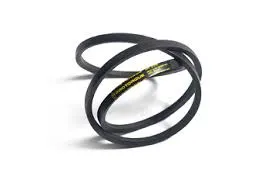- Arabic
- French
- Russian
- Spanish
- Portuguese
- Turkish
- Armenian
- English
- Albanian
- Amharic
- Azerbaijani
- Basque
- Belarusian
- Bengali
- Bosnian
- Bulgarian
- Catalan
- Cebuano
- Corsican
- Croatian
- Czech
- Danish
- Dutch
- Afrikaans
- Esperanto
- Estonian
- Finnish
- Frisian
- Galician
- Georgian
- German
- Greek
- Gujarati
- Haitian Creole
- hausa
- hawaiian
- Hebrew
- Hindi
- Miao
- Hungarian
- Icelandic
- igbo
- Indonesian
- irish
- Italian
- Japanese
- Javanese
- Kannada
- kazakh
- Khmer
- Rwandese
- Korean
- Kurdish
- Kyrgyz
- Lao
- Latin
- Latvian
- Lithuanian
- Luxembourgish
- Macedonian
- Malgashi
- Malay
- Malayalam
- Maltese
- Maori
- Marathi
- Mongolian
- Myanmar
- Nepali
- Norwegian
- Norwegian
- Occitan
- Pashto
- Persian
- Polish
- Punjabi
- Romanian
- Samoan
- Scottish Gaelic
- Serbian
- Sesotho
- Shona
- Sindhi
- Sinhala
- Slovak
- Slovenian
- Somali
- Sundanese
- Swahili
- Swedish
- Tagalog
- Tajik
- Tamil
- Tatar
- Telugu
- Thai
- Turkmen
- Ukrainian
- Urdu
- Uighur
- Uzbek
- Vietnamese
- Welsh
- Bantu
- Yiddish
- Yoruba
- Zulu
Սպտ . 05, 2024 18:48 Back to list
Automatic Door Timing Belt - Precision & Reliability for Seamless Access
Understanding Automatic Door Timing Belts A Comprehensive Guide
Automatic doors are a significant part of modern architecture, providing convenience, accessibility, and enhanced security for commercial and residential spaces alike. A crucial component of these automated systems is the timing belt, which plays a vital role in ensuring the smooth and efficient operation of the doors. In this article, we will explore what timing belts are, their importance, and how to maintain them for optimal performance.
What is a Timing Belt?
A timing belt is a durable, flexible belt made of rubber or other composite materials that synchronizes the movement of various mechanical components in an automatic door system. It connects the drive motor to the door operator, enabling the door to open and close seamlessly. The design of a timing belt typically includes teeth that engage with pulleys, ensuring precise movement and preventing slippage.
Timing belts are preferred over other types of belts due to their high efficiency, low maintenance needs, and ability to transmit power without slipping. In automatic doors, the timing belt safeguards the synchronization of the opening and closing cycles, ultimately enhancing safety and reliability.
The Importance of Timing Belts in Automatic Doors
1. Smooth Operation The timing belt allows for controlled and smooth movement of the automatic door, ensuring it opens and closes without jerks or delays. This is crucial not only for convenience but also for user safety, preventing accidents caused by sudden or erratic movements.
2. Reduced Noise Automatic doors equipped with timing belts operate more quietly than those using chains or gears. The rubber material absorbs vibrations, resulting in minimal noise, which is particularly important in environments like offices, hospitals, and libraries where tranquility is essential.
3. Durability and Longevity A well-maintained timing belt can last several years before requiring replacement. It is designed to withstand daily wear and tear, making it an economical choice for automatic door systems.
automatic door timing belt

4. Safety Features Timing belts contribute to the inherent safety features of automatic doors, ensuring they close slowly and safely. This minimizes the risk of injury to users, especially children and the elderly, who may be more vulnerable to accidents.
Maintenance Tips for Timing Belts
To ensure the longevity and functionality of timing belts in automatic doors, regular maintenance is essential. Here are some practical tips
1. Regular Inspections Periodically check the timing belt for signs of wear, such as fraying, cracking, or elongation. Early detection of these issues can prevent costly repairs and downtime.
2. Tension Adjustment Over time, the tension of the timing belt may loosen, leading to slippage. Regularly check and adjust the tension according to the manufacturer’s specifications to ensure peak performance.
3. Cleaning Keep the belt clean and free from debris. Dust and grime can hinder the operation and accelerate wear, leading to premature failure.
4. Professional Servicing Schedule regular professional maintenance by qualified technicians. They can perform comprehensive checks and replace the timing belt if necessary, ensuring the overall safety and efficiency of the automatic door system.
In conclusion, the timing belt is a critical component of automatic door systems, playing a key role in their operation, safety, and longevity. By understanding its function and implementing regular maintenance, users can ensure that their automatic doors operate smoothly and reliably for years to come.
-
Korean Auto Parts Timing Belt 24312-37500 For Hyundai/Kia
NewsMar.07,2025
-
7PK2300 90916-T2024 RIBBED BELT POLY V BELT PK BELT
NewsMar.07,2025
-
Chinese Auto Belt Factory 310-2M-22 For BMW/Mercedes-Benz
NewsMar.07,2025
-
Chinese Auto Belt Factory 310-2M-22 For BMW/Mercedes-Benz
NewsMar.07,2025
-
90916-02660 PK Belt 6PK1680 For Toyota
NewsMar.07,2025
-
drive belt serpentine belt
NewsMar.07,2025

